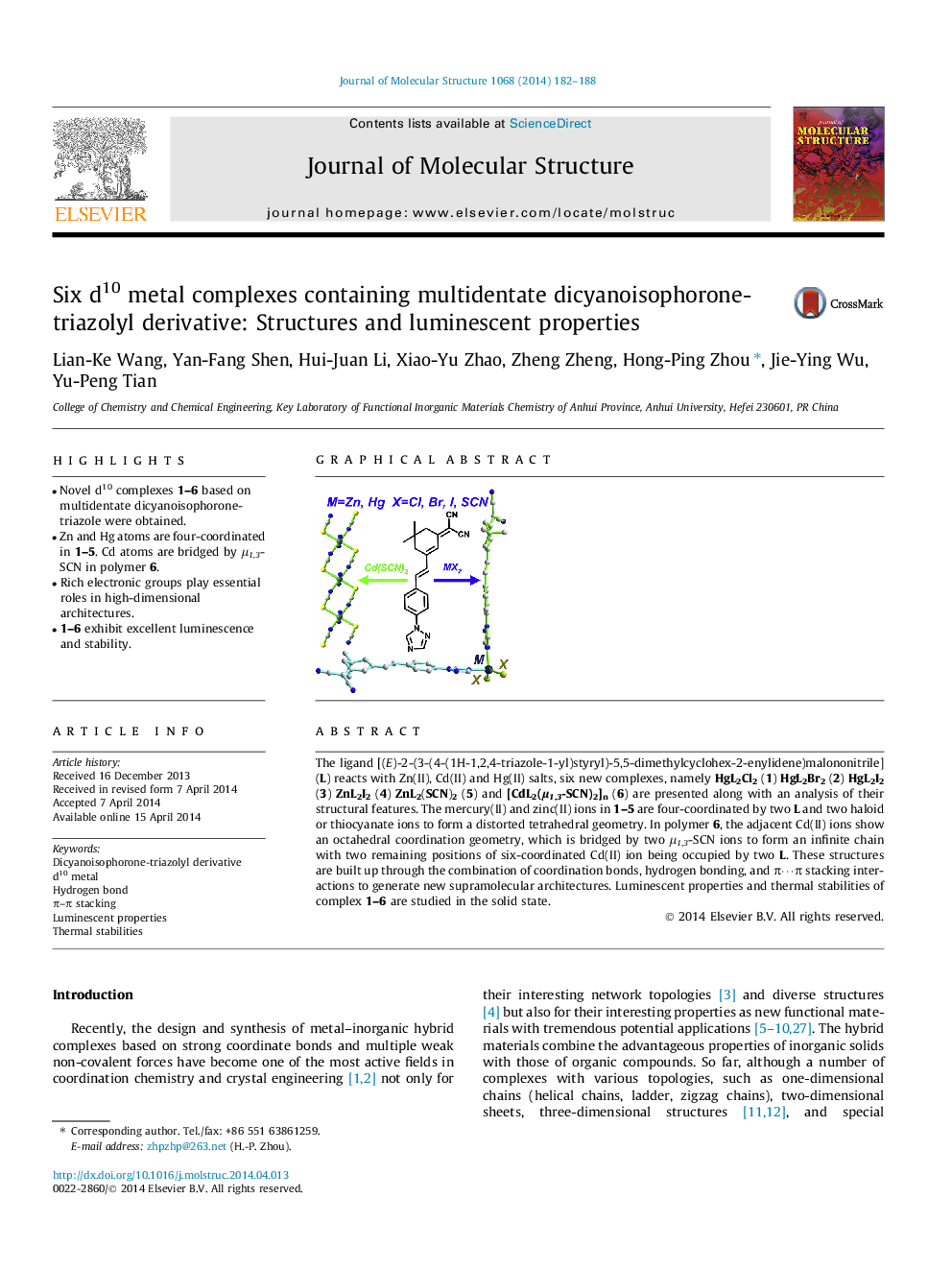| Article ID | Journal | Published Year | Pages | File Type |
|---|---|---|---|---|
| 1405548 | Journal of Molecular Structure | 2014 | 7 Pages |
•Novel d10 complexes 1–6 based on multidentate dicyanoisophorone-triazole were obtained.•Zn and Hg atoms are four-coordinated in 1–5. Cd atoms are bridged by μ1,3-SCN in polymer 6.•Rich electronic groups play essential roles in high-dimensional architectures.•1–6 exhibit excellent luminescence and stability.
The ligand [(E)-2-(3-(4-(1H-1,2,4-triazole-1-yl)styryl)-5,5-dimethylcyclohex-2-enylidene)malononitrile] (L) reacts with Zn(II), Cd(II) and Hg(II) salts, six new complexes, namely HgL2Cl2 (1) HgL2Br2 (2) HgL2I2 (3) ZnL2I2 (4) ZnL2(SCN)2 (5) and [CdL2(μ1,3-SCN)2]n (6) are presented along with an analysis of their structural features. The mercury(II) and zinc(II) ions in 1–5 are four-coordinated by two L and two haloid or thiocyanate ions to form a distorted tetrahedral geometry. In polymer 6, the adjacent Cd(II) ions show an octahedral coordination geometry, which is bridged by two μ1,3-SCN ions to form an infinite chain with two remaining positions of six-coordinated Cd(II) ion being occupied by two L. These structures are built up through the combination of coordination bonds, hydrogen bonding, and π⋯π stacking interactions to generate new supramolecular architectures. Luminescent properties and thermal stabilities of complex 1–6 are studied in the solid state.
Graphical abstractFigure optionsDownload full-size imageDownload as PowerPoint slide
